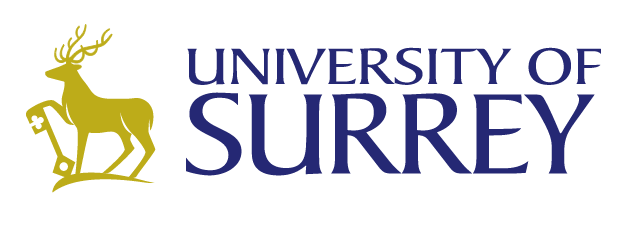MEZQUITAL OTOMI
- Facts
- Sources of the data
- Orthography
- Verb types
- Verbal inflection
- Inflectional classes by stem alternation pattern
Facts
Otomi is a small language family within Oto-Manguean. Mezquital Otomi is the Otomi variety with the largest number of speakers (100,000). Mezquital Otomi, also known as hñähñü "Otomi Speech" (from hñä-hñü "speak-Otomi") is also the most widespread, as it is spoken in different communities of the state of Hidalgo, mainly San Salvador, Chilcuautla, Ixmiquilpan, Alfajayucan, Tasquillo, Nicolás Flores, Cardonal and Huichapan, which are located across a large geographical area known as the Mezquital Valley, in the Mexican Highlands about 60 km. north of Mexico City.
Sources of the data
Hernández Cruz, Luis, Moisés Victoria Torquemada, and Donaldo Sinclair Crawford (eds). 2004. Diccionario del hñähñu (otomí) del Valle de Mezquital, Estado de Hidalgo (Vocabularios Indígenas 45). Mexico City: Instituto Lingüístico de Verano. Available online.
Bartholomew, Doris. 2004. Notas Gramáticales, in Luis Hernández Cruz, Moisés Victoria Torquemada, and Donaldo Sinclair Crawford (eds), Diccionario del hñähñu (otomí) del Valle de Mezquital, Estado de Hidalgo (Vocabularios Indígenas 45), pp. 497-516. Mexico City: Instituto Lingüístico de Verano. Available online.
Orthography
| IPA notation | Source notation | Our notation |
|---|---|---|
| NASALITY | ¨ (diaeresis) | – |
| ɨ | ụ (dot below) | – |
| ɘ | ọ (dot below) | – |
| ɛ | ẹ (dot below) | – |
| EJECTIVE | ’ | – |
| ʔ | ’ | ʔ |
| ʃ | x | – |
| tʃ | tx | – |
| pʰ | f | – |
| kʰ | j | – |
| j | y | – |
Tones
We have changed the tone marking of lexical stems from diacritics to superscript numerals for clarity and to aid with future analysis. However, since tone on clitics is lexical (and thus invariable) we have left tone marking on clitics untouched.
| Stems | Clitics | |||||
|---|---|---|---|---|---|---|
| Low | __ | hmät’i | ‘roast’ | __ | ga | 2.IRR |
| High | 2 | hne²ki | ‘dawn’ | ´ | gá | 2.CPL |
| Low-High | 12 | hñe¹² | ‘dress’ |
Verb types
Verbs in Mezquital Otomi can be basic, derived (denominal or denumeral) or old compounds. Basic verbs commonly consist of a monosyllabic root and a stem formative, but there are also many which are obscure compounds, and some entries in the dictionary involve stems which carry additional morphemes, such as datives, delimitative -tho ‘just’ or autonomous -sẹ ‘self’. In the database, we have indicated this where possible.
NOTE: Verbal entries may also appear with a nasal prefix (at times infixed) which conveys middle voice (used for typical reflexive and reciprocal situations).
Verbal inflection
Like a typical Otomi language, verbs in Mezquital Otomi inflect for TAM values and for person of the subject by means of a series of clitic words that precede the verbal stem. All verbs inflect according to the same markers. An illustrative example is the verb kuki [kɨhki] ‘get something down’. The aspectual subparadigms for ‘incompletive’ and ‘completive’, as well as the ‘irrealis’ mood, have been treated in the literature as tenses ‘present’, ‘past’ and ‘future’, respectively.
Note: For practical purposes, in the database we treat such formatives as if they functioned like affixes.
| 1st | 2nd | 3rd | ||||
|---|---|---|---|---|---|---|
| Incompletive | dí | kúki | gí | kúki | kúki | |
| Imperfect | ndí | kúki | ngí | kúki | mí | kúki |
| Completive | dá | kúki | gá | kúki | bi | kúki |
| Perfect | stá | kúki | xká | kúki | xa | kúki |
| Pluperfect | stí | kúki | xkí | kúki | xki | kúki |
| Irrealis | ga | kúki | gi | kúki | da | kúki |
Inflectional classes by stem alternation pattern
Verbs fall into four different classes attending to whether they require different stems in their paradigms and under what circumstances. A default class, which we call Class 1, does not require stem alternations. There are a further three classes.
Class 2 verbs
Class 2 verbs select a secondary stem for the 3rd person in all aspect-moods except the incompletive and the imperfect, e.g. kai ‘lay (somebody) down’. See the database for details on how this secondary stem is built.
| 1st | 2nd | 3rd | ||||
|---|---|---|---|---|---|---|
| Incompletive | dí | kai | gí | kai | kai | |
| Imperfect | ndí | kai | ngí | kai | mí | kai |
| Completive | dá | kai | gá | kai | bi | gai |
| Perfect | stá | kai | xká | kai | xa | gai |
| Pluperfect | stí | kai | xkí | kai | xki | gai |
| Irrealis | ga | kai | gi | kai | da | gai |
Class 3 verbs
Class 3 verbs are restricted to verbs that have a glottal onset /h, ʔ/ (but not all verbs with such onsets belong to this class) and they select the secondary stem for the 2nd person and the 3rd person in all aspect-moods except the incompletive and the imperfect, e.g. ʔɛi ‘throw away’.
| 1st | 2nd | 3rd | ||||
|---|---|---|---|---|---|---|
| Incompletive | dí | ʔɛi | gí | ʔɛi | ʔɛi | |
| Imperfect | ndí | ʔɛi | ngí | ʔɛi | mí | ʔɛi |
| Completive | dá | ʔɛi | gá | ʔyɛi | bi | ʔyɛi |
| Perfect | stá | ʔɛi | xká | ʔyɛi | xa | ʔyɛi |
| Pluperfect | stí | ʔɛi | xkí | ʔyɛi | xki | ʔyɛi |
| Irrealis | ga | ʔɛi | gi | ʔyɛi | da | ʔyɛi |
Class 4 verbs
Class 4 verbs require a nasalized stem for all cells except those of the incompletive and the imperfect, e.g. køʔte ‘burp’. The database lists all nasalized stems for such verbs.
| 1st | 2nd | 3rd | ||||
|---|---|---|---|---|---|---|
| Incompletive | dí | køʔte | gí | køʔte | køʔte | |
| Imperfect | ndí | køʔte | ngí | køʔte | mí | køʔte |
| Completive | dá | nkøʔte | gá | nkøʔte | bi | nkøʔte |
| Perfect | stá | nkøʔte | xká | nkøʔte | xa | nkøʔte |
| Pluperfect | stí | nkøʔte | xkí | nkøʔte | xki | nkøʔte |
| Irrealis | ga | nkøʔte | gi | nkøʔte | da | nkøʔte |






